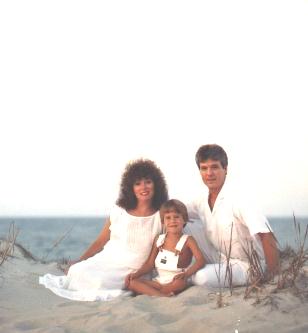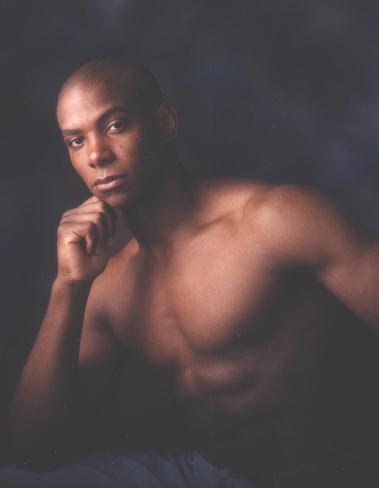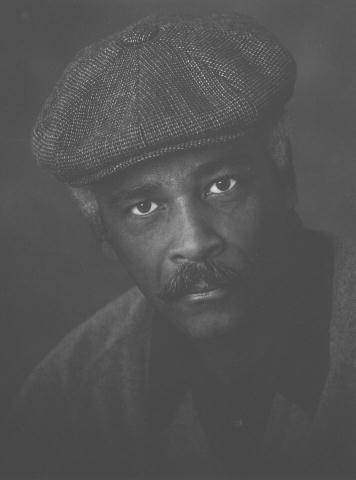
























Web Design By

© 1997-2006
Michael Minner Photography
ALL RIGHTS RESERVED

| |
Frequently Asked Questions About Portraits
What should I wear? Solid colored clothing with long sleeves generally serves to eliminate distractions in a portrait and place the emphasis on the subject's face. Wear classic styles of clothing. Trendy fashions tend to date the portrait. When two or more people are photographed together have all subjects wear similar styles in the same color family. This helps place equal emphasis on individuals and eliminates the possibility that one person will dominate the portrait. with long sleeves generally serves to eliminate distractions in a portrait and place the emphasis on the subject's face. Wear classic styles of clothing. Trendy fashions tend to date the portrait. When two or more people are photographed together have all subjects wear similar styles in the same color family. This helps place equal emphasis on individuals and eliminates the possibility that one person will dominate the portrait.
Do I have to be photographed in the studio? Portraits should make a statement about the Portraits should make a statement about the subject. Having portraits done in an environment that reflects your lifestyle and interests is a great idea because it shows people what you're all about. Photographic artists are pleased to make house calls! We'll even photograph you at church, office, the beach, or on your boat! When environmental portraiture is made outside the studio your photographer will schedule the session at the time of day when the light is most flattering to the subject. subject. Having portraits done in an environment that reflects your lifestyle and interests is a great idea because it shows people what you're all about. Photographic artists are pleased to make house calls! We'll even photograph you at church, office, the beach, or on your boat! When environmental portraiture is made outside the studio your photographer will schedule the session at the time of day when the light is most flattering to the subject.
What happens if I schedule my portrait for an outdoor session and the sun isn't shining? There's an old wives tale suggesting that the best photographs are made on sunny days. It is quite the contrary for excellent portraiture. Harsh shadows produced in bright lighting conditions make folks squint, produce "raccoon eyes", and provide too much contrast with the surroundings. People look their best under soft lighting conditions, similar to what is available on any cloudy day or on sunny days when the sun gets close to the horizon. So, if the sun's not shining on the day of your portrait there is no need to despair. The only worries you should have involve rain and wind. In the spring and summer we often check local radar conditions with the MMPhoto Weather Station just prior to leaving the studio for an assignment.
My kids won't sit still. What do I do? In this day and age most of us teach our kids not to befriend a stranger, so it sends the wrong message if we sit them down in a strange place with a strange man behind a camera and ask them to say "cheese"! We encourage you to let kids be kids. Provide them with props and toys and let them have a good time in the studio. The expressions made and the actions that occur make for priceless portraits that truly reflect the personality of your child. The Kids Gallery displays samples of some great portraits of children. befriend a stranger, so it sends the wrong message if we sit them down in a strange place with a strange man behind a camera and ask them to say "cheese"! We encourage you to let kids be kids. Provide them with props and toys and let them have a good time in the studio. The expressions made and the actions that occur make for priceless portraits that truly reflect the personality of your child. The Kids Gallery displays samples of some great portraits of children.
Are you going to tilt my head into some crazy and uncomfortable position? People have a natural tendency to make themselves comfortable. Unfortunately, relaxing one's muscles leads to poor posture. Poor posture leads to rounded shoulders and double chins. To look one's best it is necessary to win the battle with gravity. Therefore, in order for a person to look his/her best, it is essential that each body muscle work in tandem with the one to which it is attached. Professional photographers are profficient at proper posing, lighting, and composition and are quite capable of seeing you at your best.
Is there really a better side of my face? Absolutely! A professional photographer is trained to recognize a subject's best characteristics. Since the impact in most portraits revolves around the face it is essential that the photographer has the talent and ability to portray the face in the most flattering way. If you're a disbeliever then take a look at the following composites which show (from left to right) the subject's real image, mirrored image, and what the face would look like when combining the left or the right sides of the face.


We're not symmetrical, after all, are we?
What type of portrait do you suggest?  Personal tastes dictate the Personal tastes dictate the type of portrait you might consider. A literal portrait is one in which the subject looks directly at the camera. It is excellent for depicting the physical characteristics of the subject. type of portrait you might consider. A literal portrait is one in which the subject looks directly at the camera. It is excellent for depicting the physical characteristics of the subject.
When you wish to portray more than just the physical look of the subject you may wish to consider an interpretive portrait.
What is the difference between a high key and low key portrait?  When a light subject in lightly colored clothing is placed on a light background we have a high key portrait. Color coordinating all of the elements in the image insures that the face becomes the darkest part of an otherwise light image. Consequently, one's eye is drawn naturally to the subject. Conversely, the face becomes the lightest element in an otherwise dark image when a dark subject is placed in a dark environment, creating a low key portrait. When a light subject in lightly colored clothing is placed on a light background we have a high key portrait. Color coordinating all of the elements in the image insures that the face becomes the darkest part of an otherwise light image. Consequently, one's eye is drawn naturally to the subject. Conversely, the face becomes the lightest element in an otherwise dark image when a dark subject is placed in a dark environment, creating a low key portrait.
What is meant by "painting with light"? Traditionally, artists like Rembrandt posed subjects lighted by window light and painted what they saw. Photographic artists, people who make photographs (pictures made with light), utilize the same techniques as the painting masters. A subject is posed so that either the ambient light or the studio light gives dimension to it, flattering it where possible and playing down any defficiencies it might have. When the lighting and the pose are correct the photographer can work for good expression and make the the exposure. The result can be an image just as classic and beautiful as any that is painted. Photographic artists, people who make photographs (pictures made with light), utilize the same techniques as the painting masters. A subject is posed so that either the ambient light or the studio light gives dimension to it, flattering it where possible and playing down any defficiencies it might have. When the lighting and the pose are correct the photographer can work for good expression and make the the exposure. The result can be an image just as classic and beautiful as any that is painted.
Why don't professional photographers center their subjects?  Believe it or not, the center of interest in an artistic composition is not in the center! Professional photographers utilize the "Rule of Thirds" to place subjects within the frame. Imagine dividing the interior of the camera's viewfinder into a Tic-Tac-Toe grid. The four points of intersection within the grid, called "saddle points", indicate the best possiblilities for subject placement that produces the most interesting and dynamic composition. This simple rule is based on mathematically sound principles that are inherent in nature. A detailed analysis of composition can be helpful to anyone seriously interested in photography. Believe it or not, the center of interest in an artistic composition is not in the center! Professional photographers utilize the "Rule of Thirds" to place subjects within the frame. Imagine dividing the interior of the camera's viewfinder into a Tic-Tac-Toe grid. The four points of intersection within the grid, called "saddle points", indicate the best possiblilities for subject placement that produces the most interesting and dynamic composition. This simple rule is based on mathematically sound principles that are inherent in nature. A detailed analysis of composition can be helpful to anyone seriously interested in photography.
How should I display my portrait? The most exciting use of a special portrait is as wall decor in home or office. A distinctive professional portrait, a unique work of art, serves as a focal point over a fireplace or sofa and is a constant reflection of the pride you have in the people you love. It is a one of a kind home furnishing that just happens to hang on the wall! In your photographic consultation you should discuss your plans for displaying your portrait. A professional photographer can help you coordinate the image with the furnishings in the room and even make decisions regarding appropriate format and composition. A distinctive professional portrait, a unique work of art, serves as a focal point over a fireplace or sofa and is a constant reflection of the pride you have in the people you love. It is a one of a kind home furnishing that just happens to hang on the wall! In your photographic consultation you should discuss your plans for displaying your portrait. A professional photographer can help you coordinate the image with the furnishings in the room and even make decisions regarding appropriate format and composition.
 What is the appropriate size for a wall portrait? In order to achieve maximum impact a portrait or group of portraits should occupy a minimum of 50% of the space available. If the artwork occupies less space the empty space surrounding it becomes the focal point instead. An 8x10 displayed over a piece of furniture, for example, draws attention to the walls instead of to the portrait. When investing in portraits for wall decor remember that this is simply one design element which must relate appropriately to the others in the room. Therefore, size and proportion are just as important considerations as are color and style. What is the appropriate size for a wall portrait? In order to achieve maximum impact a portrait or group of portraits should occupy a minimum of 50% of the space available. If the artwork occupies less space the empty space surrounding it becomes the focal point instead. An 8x10 displayed over a piece of furniture, for example, draws attention to the walls instead of to the portrait. When investing in portraits for wall decor remember that this is simply one design element which must relate appropriately to the others in the room. Therefore, size and proportion are just as important considerations as are color and style.
 Isn't it a little vain to hang portraits of yourself on the wall? Your home is a reflection of that which you value. Most people would agree that they value nothing more than their families and loved ones, so displaying wall portraits in the home is simply an expression of pride. Vanity is when you give wall portraits to everybody in the neighborhood! Isn't it a little vain to hang portraits of yourself on the wall? Your home is a reflection of that which you value. Most people would agree that they value nothing more than their families and loved ones, so displaying wall portraits in the home is simply an expression of pride. Vanity is when you give wall portraits to everybody in the neighborhood!
|
|

